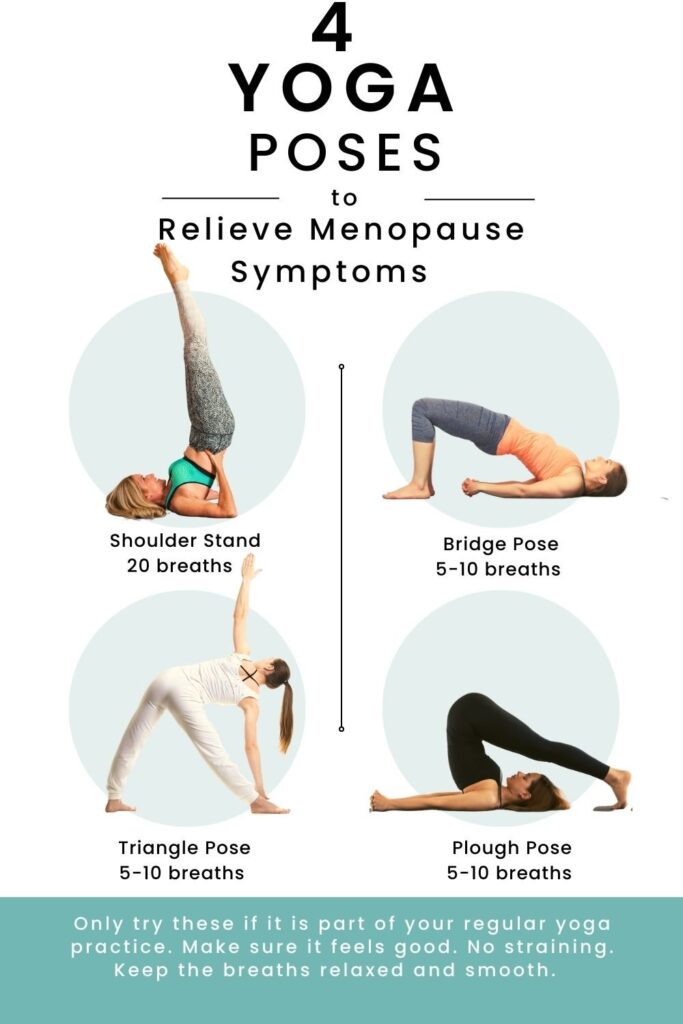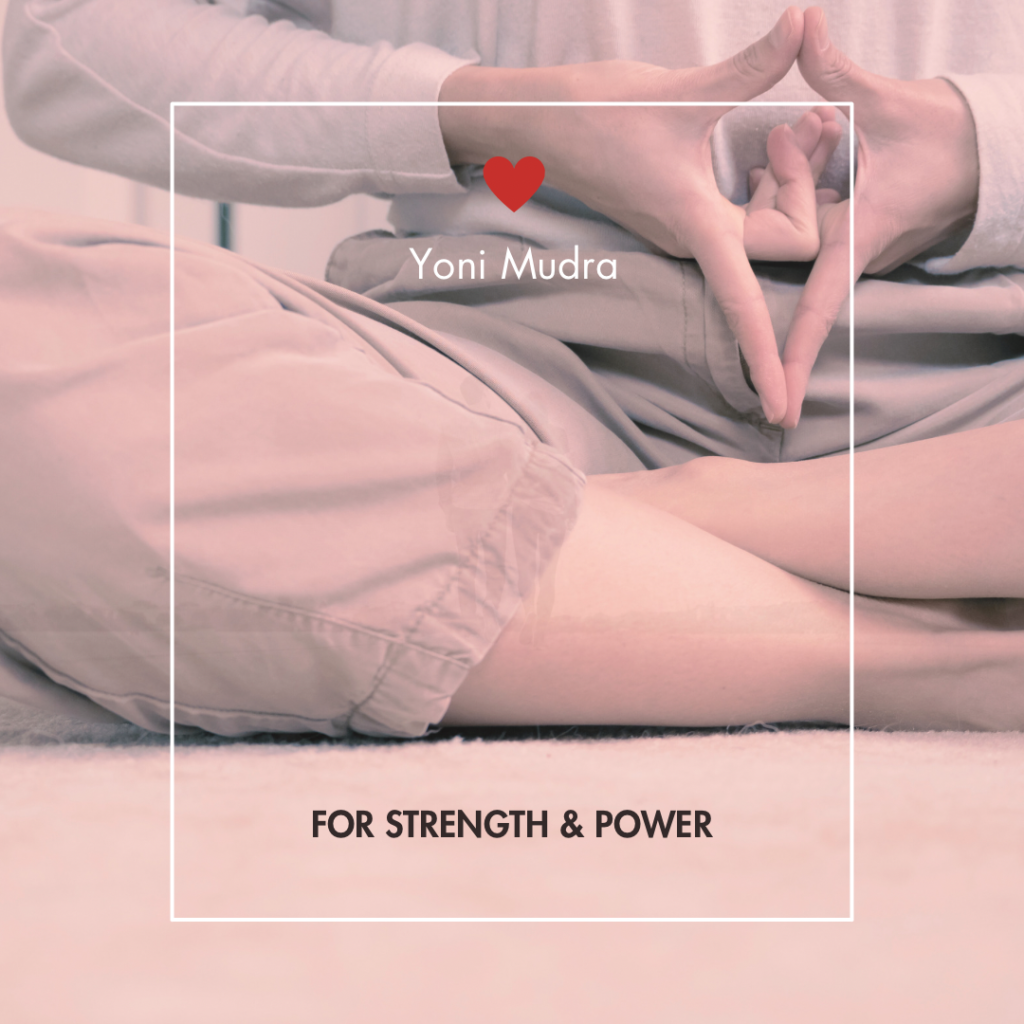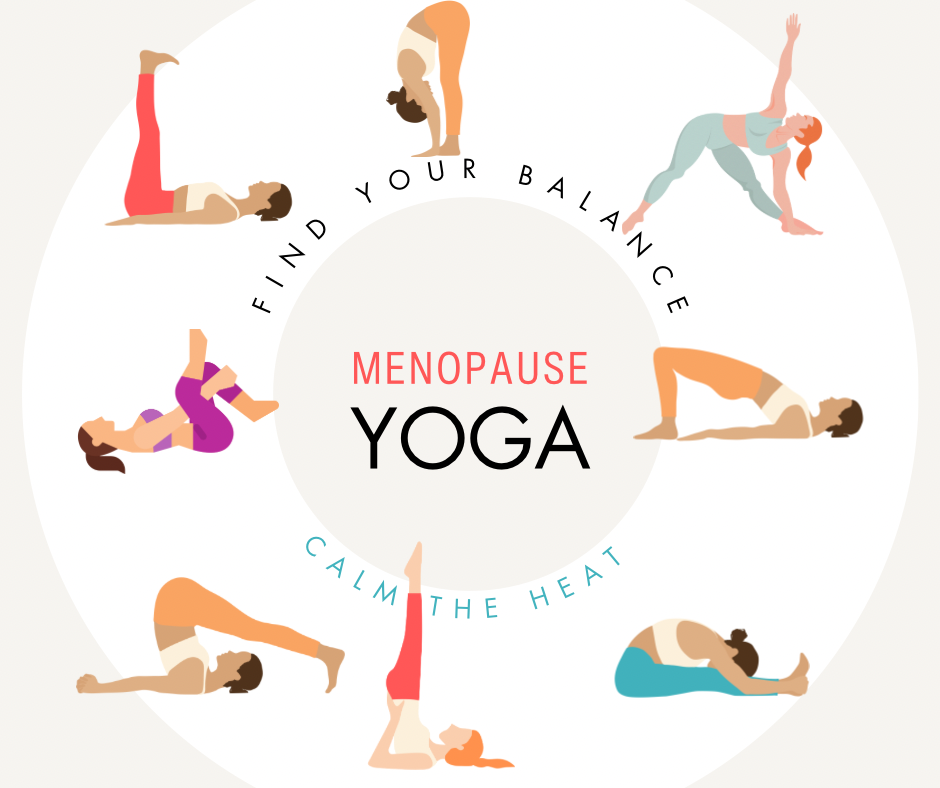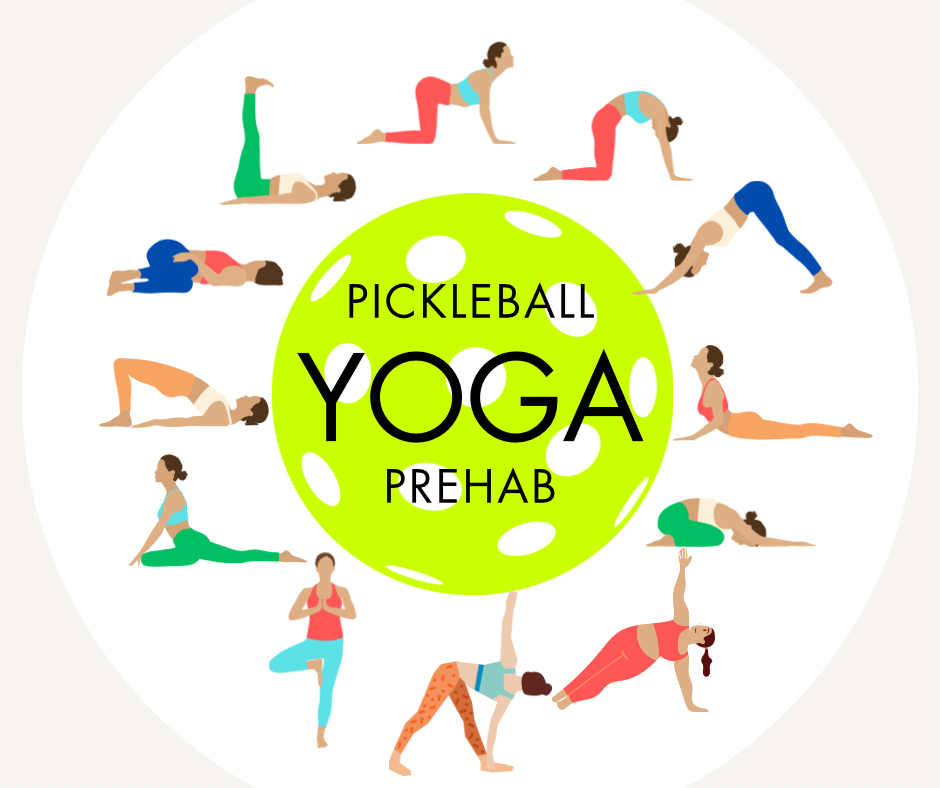There are many symptoms of menopause which cause discomfort and distress. Fortunately yoga poses for menopause can help relieve symptoms
What is menopause?
Menopause the point when your period stops for good. Menopause is when your ovaries stop releasing eggs. There are lots of symptoms, for example, hot flashes, brain fog and night sweats. There are less well known symptoms like loss of bone density, higher cholesterol levels and increased blood sugar..
Tell me more about menopause
Peri-menopause
Perimenopause or sometimes called menopause transition, usually begins 8-10 years before the menopause. Your ovaries gradually begin to make less estrogen (this is a hormone). Usually it starts in your 40s but can start earlier.
Peri-menopause lasts up until menopause. In the last 1 to 2 years of peri-menopause, the drop in estrogen speeds up, and you can start getting menopause symptoms.
Menopause
Is when your periods stop. It marks the end of your reproductive years.
Post-menopause
Women are described as post-menopausal when they have not had their period for a year.
What are the symptoms of menopause?
- Hot flashes
- Night sweats
- Brain fog/ memory problems
- Mood swings
- Depression/Anxiety
- Fatigue
- Insomnia
- Vaginal dryness
- Discomfort during sex
- Lower sex drive
- Elevated blood sugar
- Elevated cholesterol
- Increased risk of osteoporosis
Some more about menopause
The symptoms of menopause are different around the world. For example, in Japan, women notice mainly joint & muscle problems but are not concerned by hot flashes.
Hormone levels are influenced by how you eat, sleep, and exercise. A recent study has shown there is a direct relationship between your diet and menopause symptoms. This is so exciting for us menopause sufferers, because it seems if you eat plenty of soy products you can reduce your chance of hot flashes. The thought is that the traditional Japanese diet which consists of lots of soy, may be why Japanese women don’t seem to experience hot flashes like us the West.
8 yoga poses to relieve menopause symptoms
Forward bend
Reclined bound angle
Seated forward bend
Legs up the wall
Shoulder stand
Triangle
Bridge
Plough


What are the benefits of yoga for menopause?
Forward bends are good for anxiety, irritability and insomnia
Forward bends can help reduce anxiety, irritability, and mental tension. Folding forward and shutting out external stimuli can soothe the mind and reduce the effects of stress. Then the nervous system feels that all is well, and the sympathetic nervous system stops working so hard.
1. Standing forward bend
Take a generous bend in your knees and fold from your hips. Head loose and hang like a rag doll.
2. Seated forward bend
Bend your knees if you need to, fold from the hips, put a pillow on your lap to support your upper body. Let your head hang, maybe build up the pillows to rest your forehead.
Backbends help with fatigue, supported backbends help with hot flashes
Gentle-supported backbends encourage your chest and your heart to open and bring renewed energy. It also improves respiration and circulation and helps lift your spirits. Any tension in your body can make hot flashes worse. Use bolsters, blankets, or blocks to support your entire body. Reclined poses with proper support should cool and ease hot flashes.
3. Reclined bound angle pose
Bring the soles of your feet press together, legs open like a butterfly. Put pillows on the outside to support your legs as they open. Recline and use as many pillows you need to support your back. Your head can be level with your back there is no need for a big arch in the back bend.
Inversions help with depression & brain fog
Everything you do with your body can affect your thoughts and attitude. Sometimes something as subtle as a shift in posture can lighten a dark mood. Inversions can help improve a depressed mood. In effect, they are turning everything upside down. Of course being upside down also increases blood to the brain.
4. Legs up a wall
Start by sitting sideways to the wall with your hip pressed against the wall. Lie back and swing the legs up. Use a pillow under your head if needed. This should feel comfortable.
5. Shoulder stand
Is an inversion and helps with depression & brain fog
6. Triangle pose
Is good for preventing osteoporosis, as it is weight-bearing. It stimulates the abdominal organs, including the reproductive organs, and calms the nervous system. It also helps reduce anxiety & can help digestive issues.
7. Bridge pose
Is a back bend and helps with fatigue
8. Plough pose
Is an inversion which helps with depression & brain fog
More yoga to relieve menopause symptoms
Positive self affirmations
These allow you to challenge negative thoughts and, by doing every day, can start to retrain the way you think. You remove the negative self-talk and increase self-esteem. Here are some examples of affirmations that resonate with me. But do try to make up affirmations that work for you.
The morning is a time to create an intention for the day.
- I am strong, capable & kind.
- I have the power to change my story.
- I am healthy, happy, and radiant.
- I choose to respond to this challenge with grace and positivity.
- I will not worry about tomorrow. I will enjoy today.
At night is a more reflective time. Perhaps a time for gratitude
- I am grateful for my supportive family & friends.
- I am grateful for the growth I experienced today.
Yoni mudra
Mudra means seal mark or gesture in Sanskrit. Mudras are practiced to intensify the effects of your yoga or meditation practice and enhance the flow of energy. The Yoni Mudra is dedicated to the female Hindu goddess Shakti. Yoni means womb. The practice of Yoni Mudra brings strength and power.
You place your thumbs together and pointed upwards, index fingers together pointed downwards, press the other fingers together. Sit comfortably and follow your breath.





